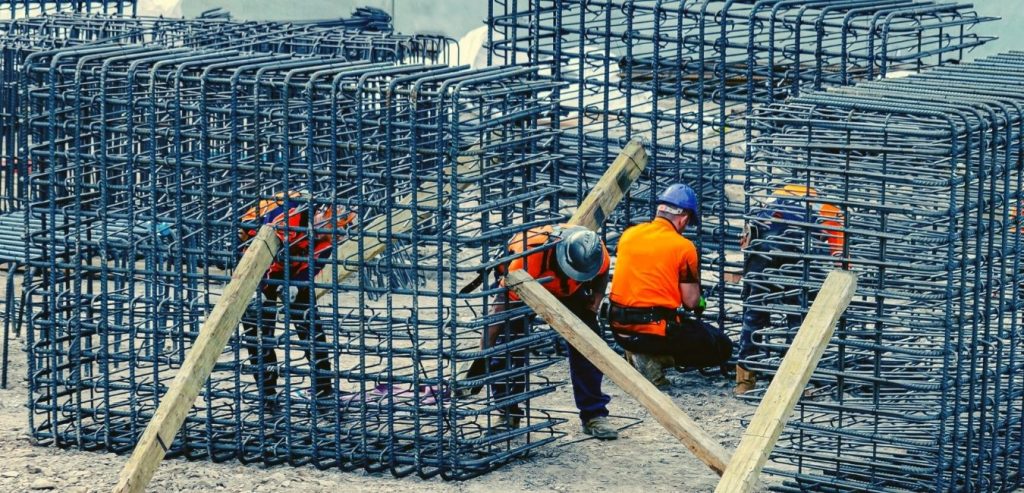
Step 4: Add an amount for waste ( A factor of 25% is usually added)

This is volume is the joint thickness times the net area of the wall. Step 3: If more than one row – the volume of mortar needed to fill the gap between rows need to be added. (ft3 or m3) - Volume per brick = (t)(w)(L+H+t) - t = mortar thickness - w = brick width/depth - L = brick length - H = brick height Step 2: Multiply the mortar required/ brick by the total number of bricks. Trick of the Trade #3: Quantity of mortar Step 1: Calculate out the volume of mortar of one brick. MASONARY QUANTITY TAKE-OFF If you need to figure out the quantity of mortar required. Step 5: Add an amount for waste ( A factor of 2-10% is usually added) Step 4: Multiply the number by the number of rows of brinks required.
Construction quantity takeoff example plus#
Standard brick size is 8’x2.25’x3.75’ - plus half the joint thickness on each side Step 3: Divide Net wall area by surface area of the brick. (ft2 or m2) - Gross surface Area – openings surface area - Do not double count area of corners Step 2: Calculate the surface area of one brick as positioned(including the mortar joint.5in. Trick of the Trade #2: Estimating number of bricks Step 1: Calculate the net surface area of the wall. For figuring out the number of bricks required in a wall there is a Five step process. There are tables available for estimating the number of bricks required, but for the PE Exam it is relatively easy to just reason out most answers. QUANTITY TAKE-OFF SOLUTION 1 Step 1: Find length of trench Trench = 42ft+17ft+20ft+24ft+63ft+41ft = 207 ft Step 2: Find the Volume of the soil in the trench 5ft x 3ft x 207ft = 3105 ft3 Step 3: Find the Volume after compaction (3105 ft3)(1-.12) = (3105 ft3)(.88) = 2732.4 ft3 Step 4: Find the Volume of the soil needed Volume of Trench – Volume of Pipe 3105 ft3 - ᅲ(d2/4)(207ft) = ᅲ((8/12)2/4)(207ft) 3105 ft3 - 72.25 ft3 = 3032.75 ft3 Step 5: Find out if you need more soil Volume of compacted soil need – Volume of compacted soil available 3032.75 ft3 - 2732.4 ft3 = 300.35 ft3 So the KTR needs to bring in more soil Step 6: How much soil does the contractor need to bring in Volume of compacted soil = (1-Shrinkage factor) x BCF 300.35/.88 = 341 BCF, LCF = BCF x 1.15 = 392/27 = 14.5 LCY Does the contractor have enough soil to backfill the trench, or will he/she have to need more? If he needs more soil, how much does he/she need to bring in. The contractor is placing a 8” water pipe in the trench and then backfilling with the soil that was removed. The soil was tested to have an approximate swell factor of 15% and a shrinkage factor of 12%. He is supposed to dig the trench 5 ft deep x 3 ft wide. The Length of Trench equals = 38+17+20+24+59+41= 199 ft 42ft 17ftĪ contractor is excavating the above trench. Which just means measure the walls in the Horizontal distance on the inside and in the vertical distance on the outside.

The Length of Trench equals = 42+17+20+24+63+41 = 207 ft However if the dimension are the outside perimeter use Horizontal In-In and Vertical Out-Out Method.

If the dimension are the centerline the calculation are easy. If the dimension are given for the centerline or the outer perimeter your calculation is different. The below is the example of a footing plan. Trick of the Trade #1: To find the length of Excavation – Be careful to fully understand what the given dimension are measuring. Steel (structural beams, steel in concrete). Soil (excavation, hauling, compacting), 2. The most likely questions that you will see during the exam are quantity take off for 1. I will show you a couple tricks of the trade that will make life a little easier and then some example problems for you to practice to gain experience and confidence. You just need to know a little bit about geometry and use a little bit of engineering common sense. QUANTITY TAKE-OFF Quantity take off problems are relatively easy to figure out.


 0 kommentar(er)
0 kommentar(er)
